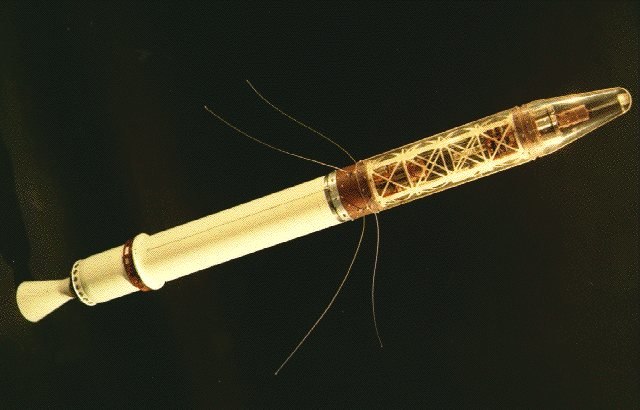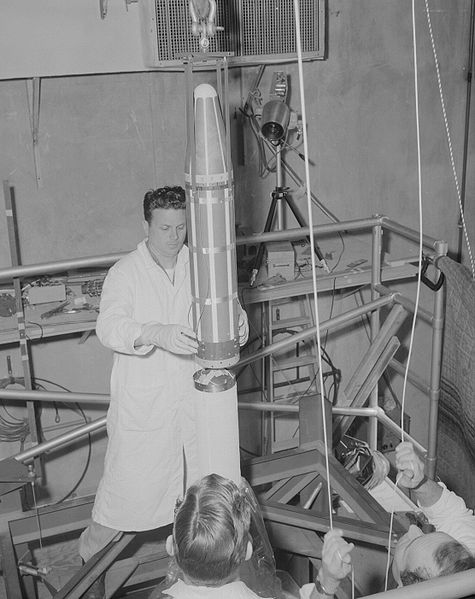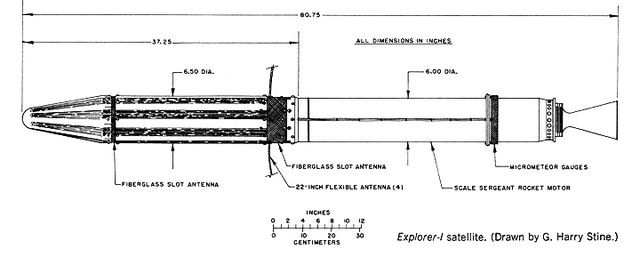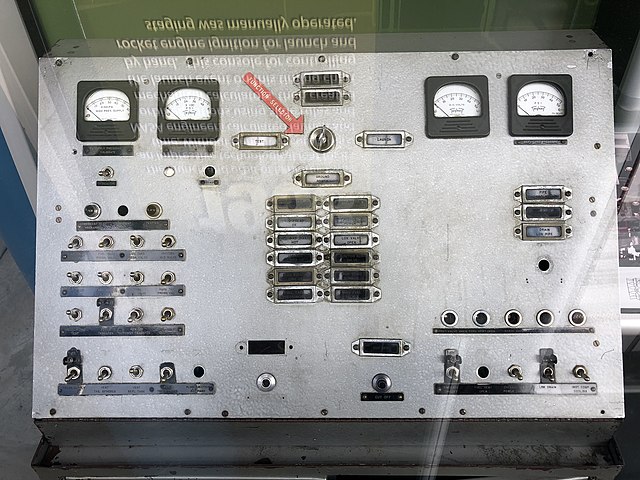Explorer 1 was the first satellite launched by the United States in 1958 and was part of the U.S. participation in the International Geophysical Year (IGY). The mission followed the first two satellites, both launched by the Soviet Union during the previous year, Sputnik 1 and Sputnik 2. This began a Space Race during the Cold War between the two nations.
Explorer 1 in its orbital configuration, with the launch vehicle's fourth stage attached
The satellite Explorer 1 is mated to its booster at LC-26.
Explorer 1 schematic
Explorer 1 launch control console on display at Huntsville Space and Rocket Center. The red arrow points to the manually turned launch key switch.
International Geophysical Year
The International Geophysical Year, also referred to as the third International Polar Year, was an international scientific project that lasted from 1 July 1957 to 31 December 1958. It marked the end of a long period during the Cold War when scientific interchange between East and West had been seriously interrupted. Sixty-seven countries participated in IGY projects, although one notable exception was the mainland People's Republic of China, which was protesting against the participation of the Republic of China (Taiwan). East and West agreed to nominate the Belgian Marcel Nicolet as secretary general of the associated international organization.
A replica of Sputnik 1, which was launched into orbit on October 4, 1957.
A commemorative stamp issued by Japan in 1957 to mark the IGY. The illustration depicts the Japanese Research Ship Sōya and a penguin.
The launch of the satellite Explorer 1 on February 1, 1958.







